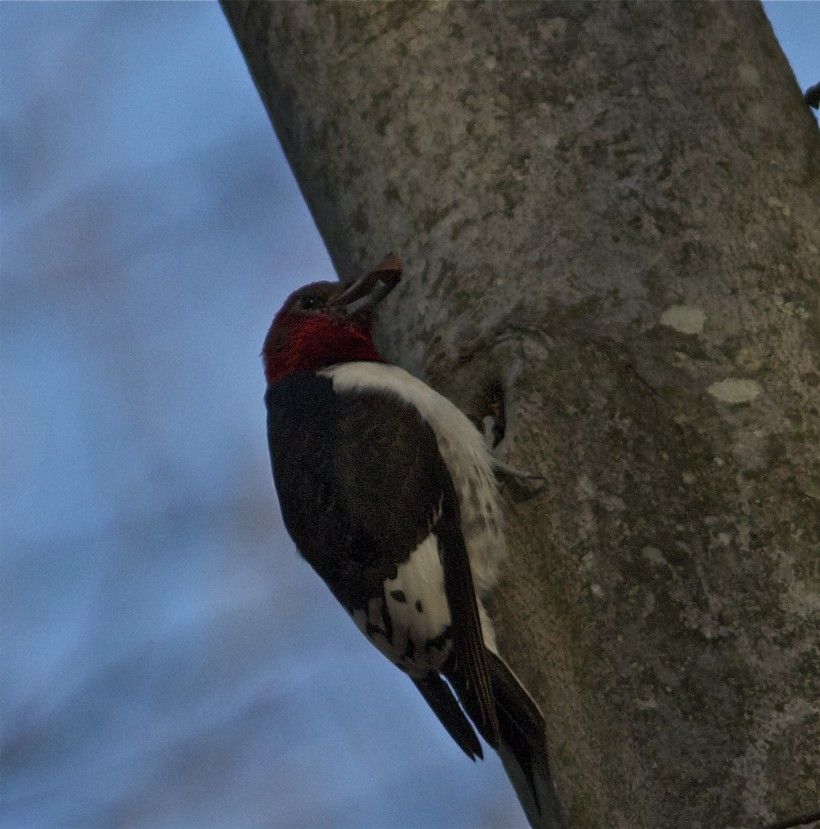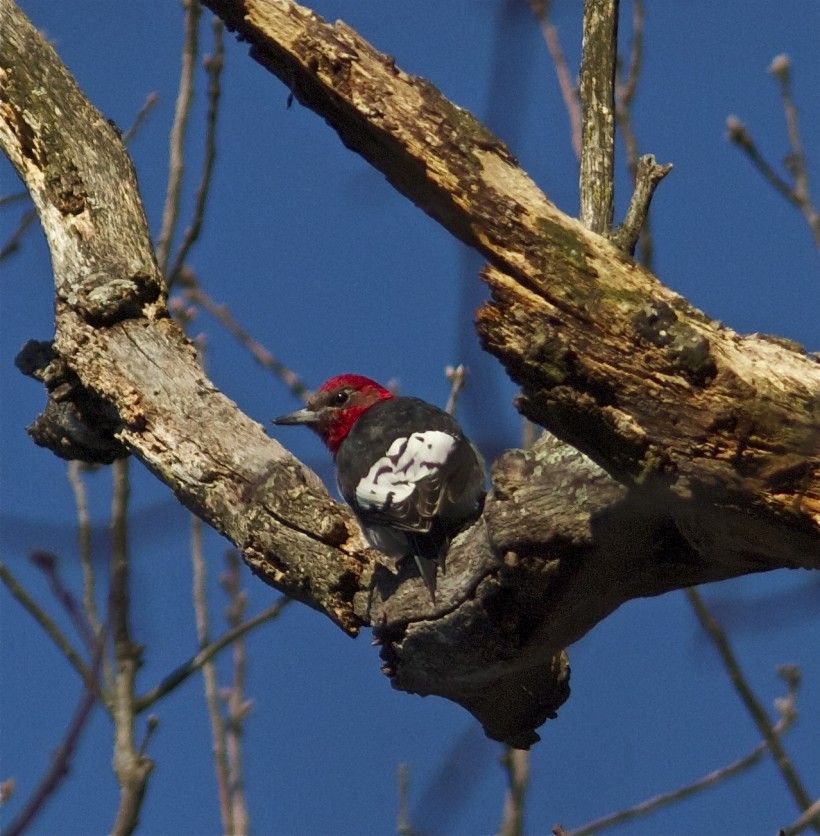Winter Resident at the Laurels Preserve
This winter, the Laurels Preserve played host to a rather uncommon visitor.
A juvenile male red-headed woodpecker was first observed on November 11th by our Natural Resource Manager, Kevin Fryberger. Since then the bird has been seen regularly on the same hillside, gathering and caching beech nuts. Yesterday, we had the opportunity to photograph this truly unmistakable woodpecker.
When we first discovered the bird in November, we noticed it was either a juvenile male or a female because it didn't have the pronounced red head of most adult males. With spring approaching, the bird has slowly come into breeding plumage and is now displaying the vibrant red head for which the species is known. In addition to the bright red head, this woodpecker has a black back and tail and a white underbelly; but it is the bird's white wings that are unmistakable and unique among our resident woodpecker species.


This red-headed woodpecker's range has seriously declined over the last several decades due to loss of habitat. Though once abundant, many northeastern states no longer host any breeding populations of this bird. This species relies heavily on dead standing trees, referred to as snags, into which it excavates a nest hole during the breeding season. European Starlings, a non-native but naturalized species, are one of several species that compete for the same nest holes for roosting and breeding. [See this post from last June on the value of snags.]
Chester County hosted at least two male red-headed woodpeckers this winter. In addition to the bird at the Laurels Preserve, another male spent the winter months at a private nature preserve in the southern portion of the county where it, too, is still being seen regularly.